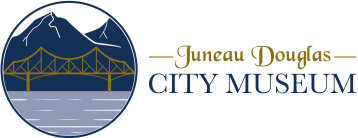Digital Bob Archive
July 1918 - Part 2
Days Of Yore
- 03/16/1991
JULY 1918 - PART 2:
Governor Thomas Riggs returned from a visit to Sitka during which he inspected the Alaska Pioneers' Home. He brought back with him a full-sized portrait, believed to be of Peter the Great. The painting had been discovered recently by Deputy Marshal H.L. Bahrt in a pile of rubbish in the Sitka jail building, which was once a Russian barracks. The painting had been badly abused and was in need of repair. The governor announced that it would be cleaned and framed and eventually would be restored to its former condition.
The first salmon cannery on Douglas Island began operating on July 18 when a supply of fish arrived at T.E.P. Keegan's plant. Many Douglas women went to work in the cannery.
Because of the great surplus of electricity from its Nugget Creek and Sheep Creek power plants, the Treadwell Company began using electricity to make steam for heating the various buildings and dwellings on its property.
The new boat for the Sitka and Skagway mail routes, the Estebeth, arrived from Seattle on July 23 with her owner, Dr. E.H. Kaser, on board. The new vessel was named for the owner's two daughters, Esther and Elizabeth. The skipper was Captain James V. Davis. The Estebeth was 65 feet in length with 18 feet of beam and was powered by an 80-horsepower Standard gas engine. She had a speed of 9 knots, carried a crew of 5, and was licensed to carry 35 passengers.
The Stikine River boat Cassiar, William Strong, was enroute to the upper Taku River as a fish-buying station.
Albert Gibbons, who had been employed at the Alaska Juneau mill, was severely I wounded while serving with an engineering regiment in France, according to word received by the Daily Dispatch. He was the first Juneau man to be wounded while serving in Europe.
Twenty-three cases and two gunny sacks of bottled liquor were discovered by Special Liquor Officer Jack McDonald in a shed across from the Customs offices in downtown Juneau. It was the biggest single haul of illegal liquor in the six months since prohibition had been in effect. It was believed that the cache had been there for some time because the sacks and some of the cases were moldy.
Thirty bags of sphagnum moss, the kind that absorbs 40 times its weight in moisture were gathered at the Lund ranch by a group of Juneau residents. The moss was to be used in making bandages for wounded soldiers. The local chapter of the American Red Cross planned to make 3,000 of the bandages.
The Comforts Committee of the Christian Science Church, which had headquarters in the Malony Building, was receiving old material that had been ripped, washed and pressed. The material was to be used to make garments for refugee children in France and Belgium.
